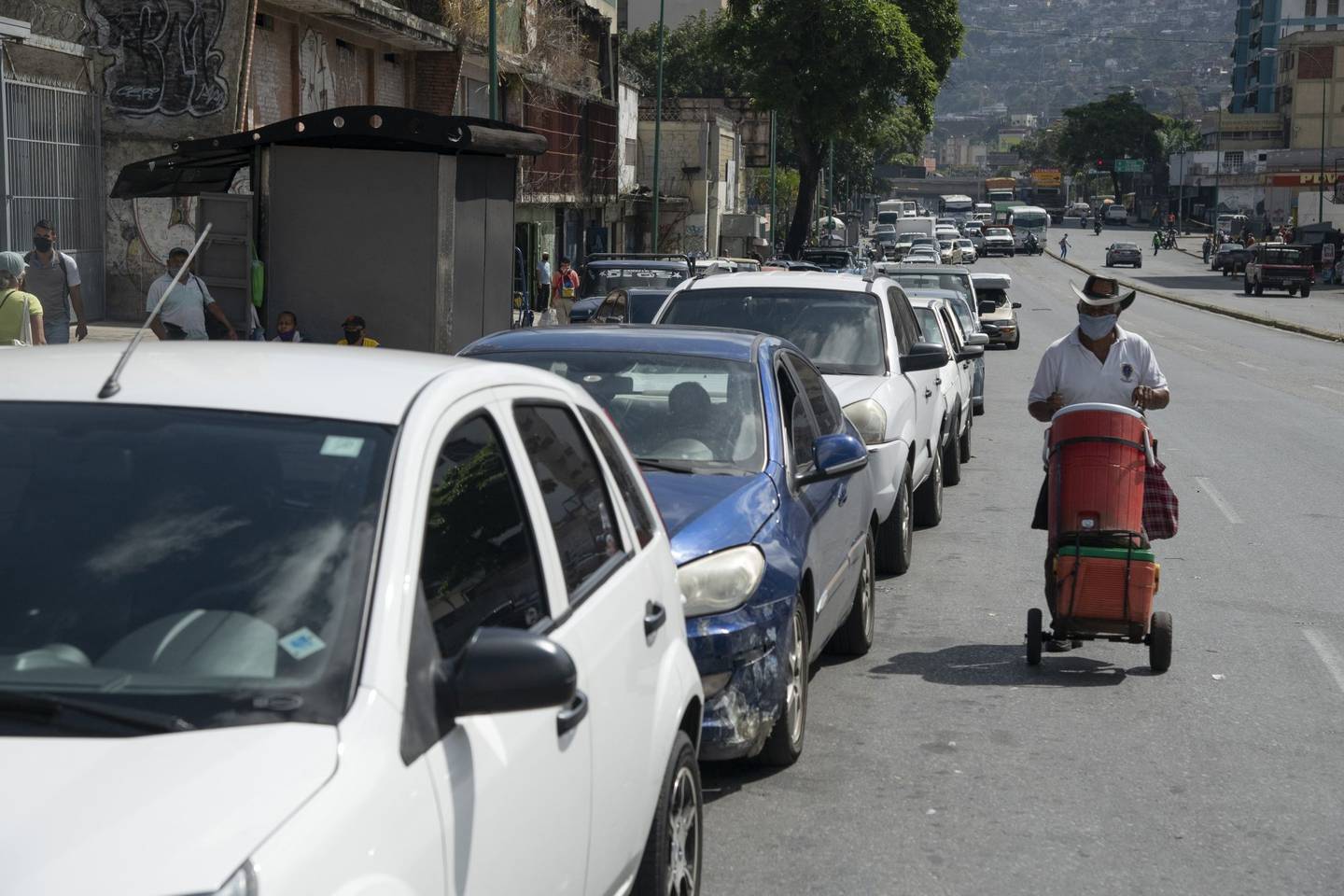Venezuela’s gasoline supply continues to worsen as fewer subsidized stations are available to the public.
A clear example is the long lines for gasoline in San Bernardino, a suburb in the heart of Caracas, where two subsidized stations once existed.
However, in early June, one of these was officially converted to a dollarized system.
Out of the 1,568 gasoline stations across the nation, as stated by former Petroleum Minister Tareck El Aissami, in 2020, 1,368 were offering fuel at subsidized rates, allotting 120 liters per month for cars and 60 liters for motorcycles.

These numbers have shifted due to currency revaluation and other adjustments, and many of these stations have now switched to international or dollarized rates.
This switch was seen in mid-May when around 15 subsidized stations in three main municipalities of Bolivar State, located in southern Venezuela, started charging dollarized rates for fuel.
A similar trend occurred in Caracas, where at least 20 subsidized stations changed dollarized rates in June.
In border states like Zulia and Táchira, the notion of fuel subsidies is almost non-existent. Most stations charge international prices of about US$0.5 per liter, with some unofficial services reaching up to US$3 per liter.
Fuel supply shortages have been experienced in Falcón, near Zulia, where two crucial refineries, Amuay and Cardón, are situated. No official explanation has been given for this shortage.
Long queues for fuel, waiting for up to five hours for dollarized gas and up to five days for subsidized gas, have been reported in this coastal area.
The available supply often falls short of the demand, causing significant problems for the consumers.
Although the failures in gasoline supply have not been officially addressed, José Bodas, the general secretary of the United Federation of Oil Workers (Futpv), suggests that several of the country’s oil plants are paralyzed, reducing the refining capacity.
However, the full extent of the problem and its duration remains uncertain.
Petróleos de Venezuela (PDVSA), the state oil company, hasn’t provided an official statement on the issue.
Recently, Juan Carlos Díaz, vice-president of consumption and national supply of PDVSA, attributed the crisis to misinformation on social media and interference from criminal groups.
While the Maduro administration hasn’t outlined strategies to manage the situation, reducing subsidized stations is part of a broader policy push toward dollarizing fuel access.
Bodas notes the increase in international-price stations and the dwindling number of subsidized ones, adding that the situation could depend on the existing fuel reserves in the country.
With information from Bloomberg
News Venezuela, English news Venezuela, gasoline shortage Venezuela, economic news Venezuela, Gasoline supply worsens in Venezuela

